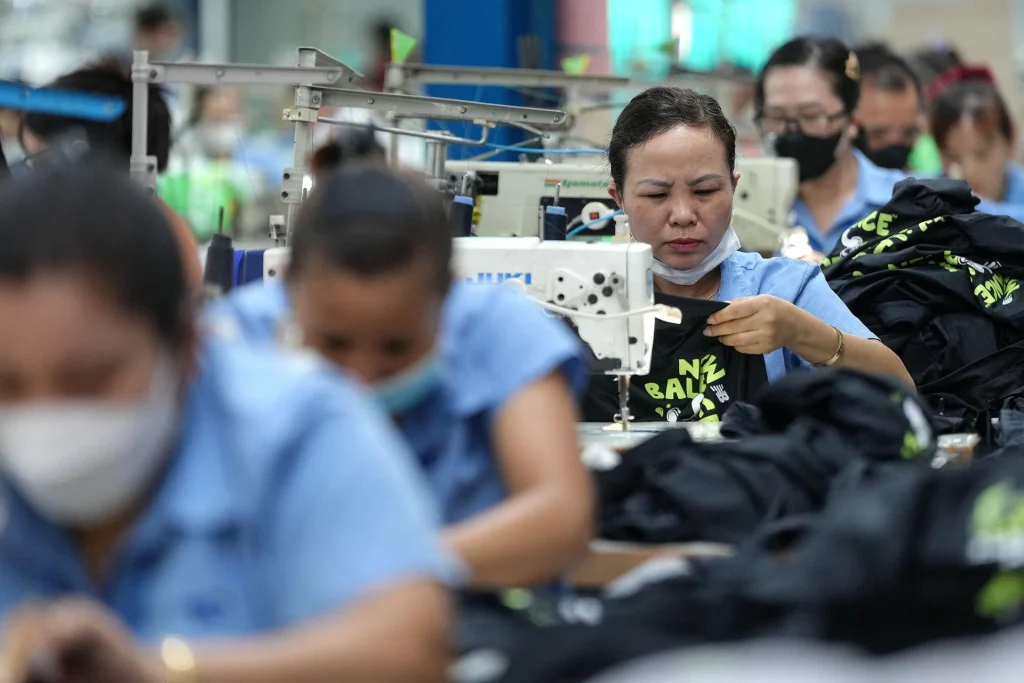DESPITE steep US tariffs, Vietnam continues to attract strong foreign investment – especially in manufacturing and industrial real estate – driven by policy incentives, improving infrastructure and its strategic role in the move of the global supply chain away from China.
Vietnam’s economic ties with the United States are deep. In 2024, exports to America totalled US$136.6 billion, accounting for nearly 30 per cent of the country’s gross domestic product. While the imposition of tariffs dealt a blow to Vietnam’s manufacturing sector, its May manufacturing purchasing managers’ index recovered slightly to 49.8 after falling to 45.6 in April, signaling early signs of stabilization.
Two sectors – manufacturing and real estate – are leading Vietnam’s foreign investment surge. As of April 2025, newly approved foreign investment reached US$13.82 billion, up 39.9 per cent year on year, according to Vietnam’s Ministry of Finance. Of that, US$8.9 billion flowed into manufacturing, and US$2.83 billion into real estate, which jumped 61.9 per cent.
Industrial and construction-related sectors grew 7.42 per cent in the first quarter of 2025, contributing more than 40 per cent to GDP.
Speaking at the Vietnam Industrial Parks Development Forum on May 29, Nguyen Thi Dung, vice chair of the Vietnam Industrial Real Estate Association, emphasised that infrastructure investment in industrial parks has become an urgent priority. As prime land in central areas dwindles, demand is shifting to second-tier provinces.
But challenges remain. Nguyen cited four bottlenecks: complicated approval procedures, lack of a unified infrastructure plan, land acquisition issues and poor inter-regional connectivity.
A NEWSLETTER FOR YOU

Friday, 8.30 am
Asean Business
Business insights centering on South-east Asia’s fast-growing economies.
In an interview with Caixin, Lance Li, CEO of BW Industrial, a major Vietnamese industrial real estate platform, said Vietnam’s land supply system differs significantly from China’s. In China, land is allocated by the government, enabling fast supply at low cost; in Vietnam, land is sold by first-tier developers, with higher prices and longer acquisition timelines.
Most land in Vietnam is freehold, adding further delays to new supply. The land acquisition process is complex and time-consuming, making it difficult to rapidly increase supply, Li said. In southern centers such as Binh Duong and Dong Nai, available land is nearly exhausted.
Industrial land prices in Vietnam are now often higher than in Chinese mainland, with rents rising about 6 per cent a year, Li said.
Vietnam has 416 industrial parks covering a total of nearly 1.29 million hectares. To accommodate the accelerating shift of global manufacturing, the government plans to add 221 new parks, expand 76 and reconfigure 22 by 2030.
BW Industrial, founded in 2018 by Warburg Pincus and Becamex IDC, now operates more than 50 projects across 12 key provinces, managing 10 million square meters of land and US$3 billion in assets. Li, who joined in 2021 from ESR China, oversees nearly 4.4 million square meters of developed or under-construction properties.
Li said China-based firms moving overseas are not doing so uniformly. Each company’s decision depends on internal dynamics. He warned that companies should not assume Vietnam is automatically cheaper. Many firms face high hardware costs, lower labor productivity and infrastructure constraints.
“From the Trump 1.0 era to the Covid-19 pandemic, and now to Trump 2.0, market dynamics have changed significantly, and the types and pace of corporate relocation have also evolved,” Li said.
On labor, Li noted that after three months’ training, Vietnamese workers could reach 80 per cent or more of Chinese workers’ efficiency, while earning less than 80 per cent of Chinese wages, which is still an advantage. But only a few firms achieve parity, often relying on automation and advanced management.
The pandemic was a turning point. Initially, only final product manufacturers moved out of China. But Covid paralysed logistics worldwide, sparking widespread supply chain concerns. The industry shifted from “just in time” to “just in case,” forcing suppliers to localize.
Stricter rules of origin also play a role. Many countries now demand higher local content in exported goods. “To qualify for certificates of origin, the entire supply chain has to move,” Li said.
After China lifted Covid restrictions in late 2022, another wave of companies went abroad, not due to sudden shifts, but as long-delayed decisions were finally executed. Since 2023, Chinese firms continue to expand overseas, each driven by different factors, be it rising orders, cost-cutting or domestic policy shifts.
Despite some post-entry disappointments, Vietnam still holds a manufacturing edge in Southeast Asia. Confucian values instill discipline, and labor costs are lower than in Thailand but higher than in the Philippines.
Government efficiency, political stability and a pragmatic, open stance add to Vietnam’s appeal. The country has signed 17 free trade agreements and maintained low average tariffs, even before the Trump-era trade tensions.
However, uncertainties persist. Li said clients are increasingly seeking guidance amid new tariff rumors. Trump’s trade stance remains unpredictable, making some investors wary while others push forward.
He expects US tariffs on China to stay high, while those on other countries may be negotiated down. The strategy, he said, is classic “raise high, retreat slowly” diplomacy.
Looking ahead, Li believes China’s outbound manufacturing push will intensify over the next three years. As long as US-China tensions persist, the shift is inevitable. Even China’s cost advantages can’t offset steep tariffs.
With lead manufacturers relocating, tier-one and tier-two suppliers are following, forming entire supply chains abroad. The speed of this evolution depends on how quickly capacity is built up overseas.
Still, Vietnam must manage rising land and labor costs. Wages rise 6 per cent to 7 per cent each year, and in advanced areas, salaries now rival China’s central and western regions. Labor-intensive businesses also face potential strikes and labor disputes, Li warned. CAIXIN GLOBAL


